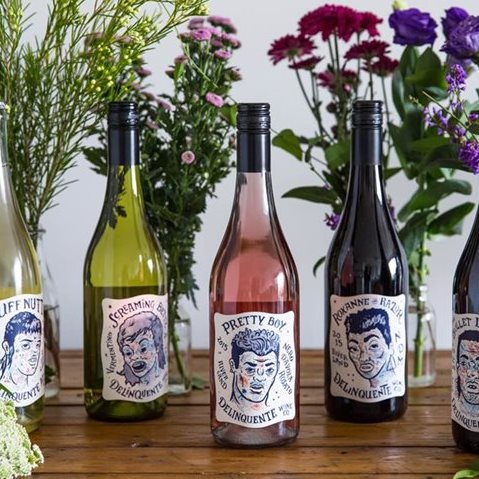There’s more to minimal intervention wine than the name suggestsm, writes Madeline Woolway.
“I personally don’t care too much for the term ‘natural wine’; it implies that the rest are unnatural. Maybe a term that would be better to use is ‘minimal intervention wines’,” Tom Sheer co-owner of Lo-Fi Wines, told Hospitality. “Essentially what it refers to is the ‘less is more’ mantra. So, no manipulation through the cellar, no adjusting for acidity, no adding tannins, or new oak, [and then the use of] sulfur is heavily debated."
Sheer’s business partner at Lo-Fi Wines, James Audas said “The fruit has to be treated well with organic or biodynamic practices and then when moving into the cellar, there should be minimal intervention. When we’re talking about natural wines it’s all about no additions.”
 Delinquente Wine Co wines are grown and made in Riverland, South Australia.
Delinquente Wine Co wines are grown and made in Riverland, South Australia.
 Micheal Gindl wines hail from Weinvertel, Austria.
Micheal Gindl wines hail from Weinvertel, Austria.
Zero sulfur, low sulfur and beyond
When it comes to the zero versus low sulfur debate, Lo-Fi Wines has a mixture of both. “We have some guys that work with none and are completely dogmatic about it,” Audas said. “Then we have some who will add a small amount before bottling; I think a lot of it is peace of mind in sending the wine to Australia – it’s a long way to travel.
“All of our Australian producers are very much along the minimal sulfur line. I think for them it’s more that they’ve always been told at wine school that you have to add sulfur, but now they’re starting to experiment and think about what they’re wines will taste like, or look like, in six months or a few years if they don’t add things.”
This experimental nature is part of the fun for minimal intervention winemakers. New and old techniques can pique interest and make for good conversation, but drinkability has to remain the key concern. “First and foremost, a wine has to be delicious. At the end of the day wine is made to be drunk, not to look at and talk about endlessly. You can be as ideological as you want and end up with a terrible wine,” Sheer said.
“It’s actually wildly difficult to make unsulfured wines that will sit there and age beautifully. Those who pull it off reach cult status.”
Deciding whether to use sulfur is only the surface of minimal intervention winemaking. “A lot of winemakers are turning towards techniques that build up natural antioxidants. Things like skin contact, extended time on lees, and extended whole bunch pressing build up antioxidants so the wines don’t oxidise as quickly. We’re seeing more orange and macerated white wines around now, especially in the natural wine category,” Audas said.
Natural winemaking techniques also help producers to highlight the wine’s provenance and unique characterisitcs. “Expressing terroir in a more pure way is definitely at the front of a winemaker’s mind. Minimal intervention winemakers think if they don't tinker with the fruit, if I don’t add anything to the wine, it will be a more unadulterated expression of where the wine comes from,” Sheer said.
“The idea of terroir and provenance is what gets me excited about wine. You can have a sauvignon blanc from New Zealand and one from France; they might be the same plant but they couldn’t taste more different. When you start adding chemicals you can homogenise the wine.”
 Gut Oggau Estate wines.
Gut Oggau Estate wines.
 Peter Wetzer wines are made in the small town of Sopron, Hungary.
Peter Wetzer wines are made in the small town of Sopron, Hungary.
Treating them right
“We’re lucky to have great relationships with our farmers, but shipping and trying to coordinate everyone to bottle at the same time can be a bit a difficult. So far though, we’ve found the wines travel well and we have great storage once they get here,” Audas said.
“You have to be really on top of your logistics and storage,” Sheer said, “there’s just less room for error, especially with the low or no sulfur wines.”
Then there is the question of what happens once the wines leave their hands. “These days in restaurants there is a lot more pride in how wine is stored, it’s no longer just a case above the fridge,” said Sheer.
“I would say 90 percent of our customers are restaurants and almost of all of them are restaurants where we know the people,” Audas said. “We want to work with sommeliers who understand and appreciate natural wines so they can explain the differences and even the story behind them.”
 Austrian winemaker, Claus Preisinger.
Austrian winemaker, Claus Preisinger.
 Eduard and Stephanie Tscheppe-Eselboc of Gut Oggau in Austria.
Eduard and Stephanie Tscheppe-Eselboc of Gut Oggau in Austria.
 Frewin Ries and Candice Helbig own and operate Australian label, CRFT Wines.
Frewin Ries and Candice Helbig own and operate Australian label, CRFT Wines.

